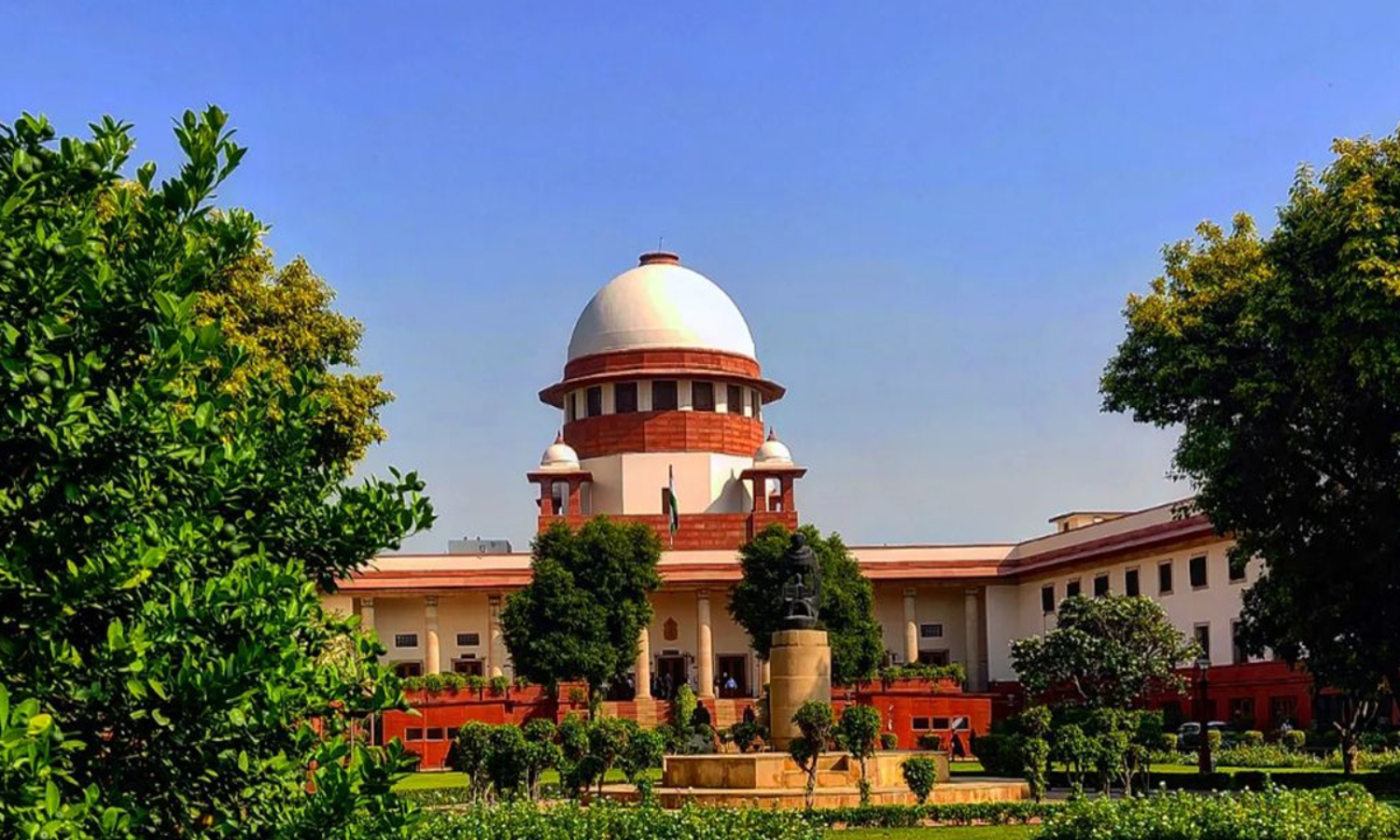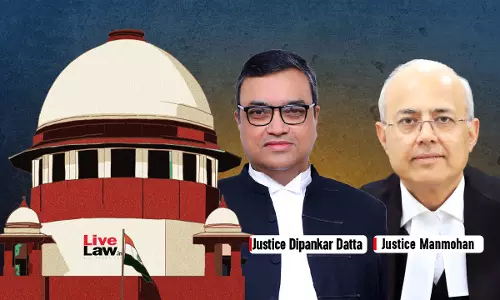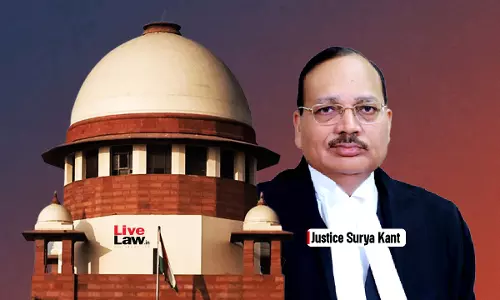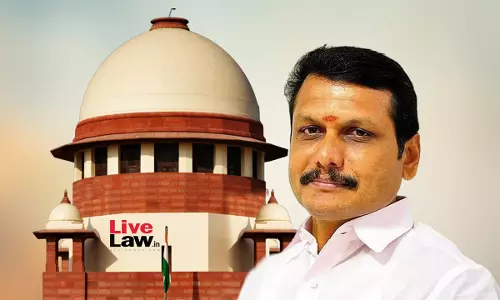Article 19 & 21 Rights Can Be Enforced Against Private Individuals & Entities : Supreme Court Holds By 4:1 Majority

In an important development, a Constitution Bench of the Supreme Court on Tuesday said that the fundamental rights enshrined in Articles 19 and 21 are enforceable even against persons other than the state or its instrumentalities.“A fundamental right under Article 19/21 can be enforced even against persons other than the State or its instrumentalities”, the majority judgment...
In an important development, a Constitution Bench of the Supreme Court on Tuesday said that the fundamental rights enshrined in Articles 19 and 21 are enforceable even against persons other than the state or its instrumentalities.
“A fundamental right under Article 19/21 can be enforced even against persons other than the State or its instrumentalities”, the majority judgment held.
Justice V. Ramasubramanian, writing the majority judgement on behalf of himself, and Justices S. Abdul Nazeer, B.R. Gavai, and A.S. Bopanna, highlighted how after A.K. Gopalan v. State of Madras, AIR 1950 SC 27 ‘lost its hold’, the top court has over time expanded the width of Article 21 in several areas such as health, environment, transportation, education, and rights of prisoners. A.K. Gopalan was a famous case in which a majority of five judges, while hearing the plea of a popular Indian communist leader who had been arrested under a preventive detention law, placed a narrow and restrictive meaning on Article 21. Justice Ramasubramanian wrote, “The original thinking that these rights can be enforced only against the state, changed over a period of time. The transformation was from ‘state’ to ‘authorities’ to ‘instrumentalities of state’ to ‘agency of the government’ to ‘impregnation with governmental character’ to ‘enjoyment of monopoly status conferred by state’ to ‘deep and pervasive control’ to the ‘nature of the duties/functions performed’.”
In this connection, the Supreme Court judge also quoted Justice Vivian Bose’s famous words in S. Krishnan v. State of Madras, AIR 1951 SC 301 about not placing undue importance on petty linguistic details, and ‘penetrating deep into the heart and spirit of the Constitution’. On the strength of this prescription, Justice Ramasubramanian proceeded to answer the question whether a fundamental right under Articles 19 or 21 could be claimed other than against the state or its instrumentalities, in the affirmative. “The answer to [this] question is partly found in the nine-Judge Bench decision in Justice K.S. Puttaswamy itself,” he acknowledged, referring to how, in Justice K.S. Puttaswamy (Retd.) v. Union of India, (2019) 1 SCC 1, the right to privacy was recognised as a right which ‘protected the inner sphere of the individuals from interference by both the state and nonstate actors’. Going one step further, the majority of the five-Judge Bench also held that the state was under a duty to affirmatively protect Article 21 rights of a person against any threat to their personal liberty, even if such a threat originated from a non-state actor.
Justice Nagarathna dissents
Notably, Justice B.V. Nagarathna took a different stand with respect to the horizontal application of Articles 19 and 21. While her colleagues on the bench held that the rights guaranteed by the said articles of the Constitution could be enforced even against persons other than the state or its instrumentalities, Justice Nagarathna highlighted the practical difficulty of permitting such constitutionally consecrated rights to operate against private individuals and entities.
Horizontal application of fundamental rights under Articles 19 and 21 could be permitted, she said, only if the elementary differences between a fundamental right and the congruent common law right, the incidence of duty to respect each of such forms of rights, and the forum which would be called upon to adjudicate on the failure to respect each of such rights were ignored. According to Justice Nagarathna, although this court, through its ‘jurisprudential labour’ has progressively expanded the scope of Article 12 of the Constitution so as to ensure that a private entity performing a public duty or function and therefore ‘informing our national life’, does not escape the discipline of Part III merely because it is not ‘state’ stricto sensu, “a private body, acting in a private capacity, fulfilling a private function, cannot be axiomatically amenable to the claims of fundamental rights violations”.
She added that recognising a horizontal approach of fundamental rights between citizens inter se would render redundant, all the tests and doctrines forged by this Court to identify ‘State’ for the purpose of entertaining claims of fundamental rights violations. Quite apart from that, on account of the availability of an alternate remedy under common law, the courts would be reluctant to entertain a writ petition, the judge claimed. Finally, if these fundamental rights were allowed to operate horizontally, writ courts, which do not enter into the adjudication of disputed questions of fact, would have to invariably deal with such questions of fact. In support of her conclusion, relying on judgements that showed the top court’s disinclination or reluctance in recognising that the said fundamental rights could operate horizontally, Justice Nagarathna said, “The rights in the realm of common law which may be similar or identical in their content to the fundamental rights under Articles 19 or 21 operate horizontally. However, the fundamental rights under Articles 19 and 21 may not be justiciable horizontally before the constitutional courts except for those rights which have been statutorily recognised and in accordance with the applicable law. However, they may be the basis for seeking common law remedies.”
In her separate opinion, Justice Nagarathna juxtaposed fundamental rights with common law rights. Relying on a catena of judicial pronouncements, she concluded that it was the indisputable position that even though the content of a right recognised under Part III of the Constitution might coincide or overlap with a common law right, remedies available against violation of the respective form of rights operate in different spheres of law. “Although the content of a common law right and a fundamental right may be almost identical, the remedy against violation of a common law right shall lie under common law and not under the Constitution. Similarly, the remedy against a violation of a fundamental right is provided for under the Constitution itself expressly against the state,” the judge explained.
Apart from rights that had received statutory recognition, another exception was also recognised in the interpretive scheme proposed by Justice Nagarathna, for the specific case where a writ of habeas corpus is issued against a private person or entity for illegally and arbitrarily detaining the right-holder. She said, “In my humble view, an illegal detention is a violation of Article 21 of the constitution irrespective whether the detention is by the state or by a private person. Therefore, in the context of the remedy of writ of habeas corpus, Article 21 would operate horizontally.”
“The rights in the realm of common law, which may be similar or identical in their content to the Fundamental Rights under Article 19/21, operate horizontally: However, theFundamental Rights under Articles 19 and 21, may not be justiciable horizontally before the Constitutional Courts except those rights which have been statutorily recognised and in accordance with the applicable law. However, they may be the basis for seeking common law remedies. But a remedy in the form of writ of Habeas Corpus, if sought against a private person on the basis of Article 21 of the Constitution can be before a Constitutional Court i.e., by way of Article 226 before the High Court or Article 32 read with Article 142 before the Supreme Court.”
Furthermore, Justice Nagarathna asserted that the duty of the state under Article 21 was negative inasmuch as it was only required to not deprive a person of their right to life and liberty, except in accordance with the law. Unlike the majority of the judges who decided to impart a positive character to the state’s constitutional duty under the particular article, Justice Nagarathna observed, “This court has not recognised an affirmative duty of the state under Article 21 of the Constitution to protect the rights of a citizen against the threat to the liberty of a citizen by the acts or omission of another citizen or private agency.”
In her part dissent, Justice Nagarathna also proposed to hold the government vicariously liable for a statement made by a minister that is traceable to any affairs of the state or for the protection of the government by invoking the principle of collective responsibility, while the other four judges on the Constitution Bench, rejected the contention that vicarious liability could be envisaged in such a situation. Justice Nagarathna, the junior-most judge on the bench, was the lone dissenting voice.
The other reports about the judgment can be read here.
Case Title
Kaushal Kishor v. State of UP | WP (Crl) No. 113/2016
Citation : 2023 LiveLaw (SC) 4




